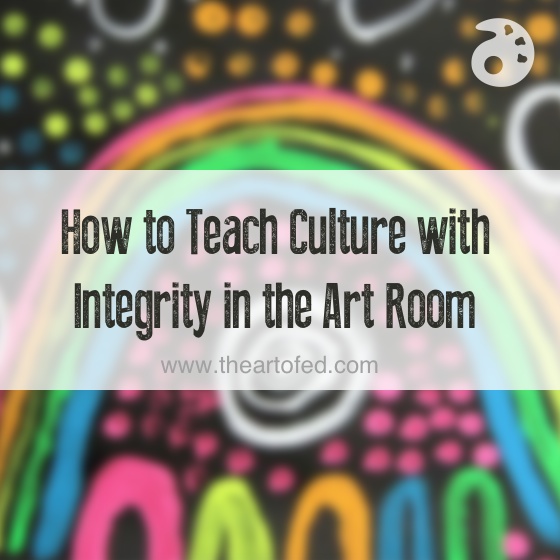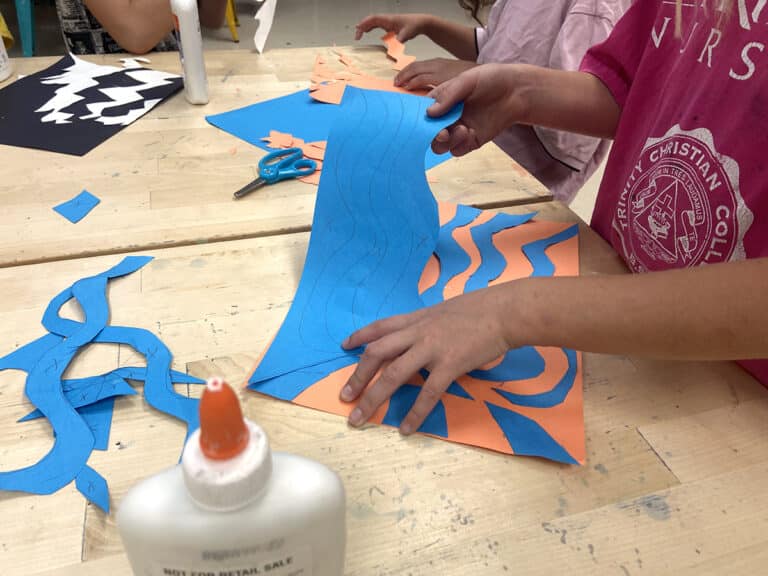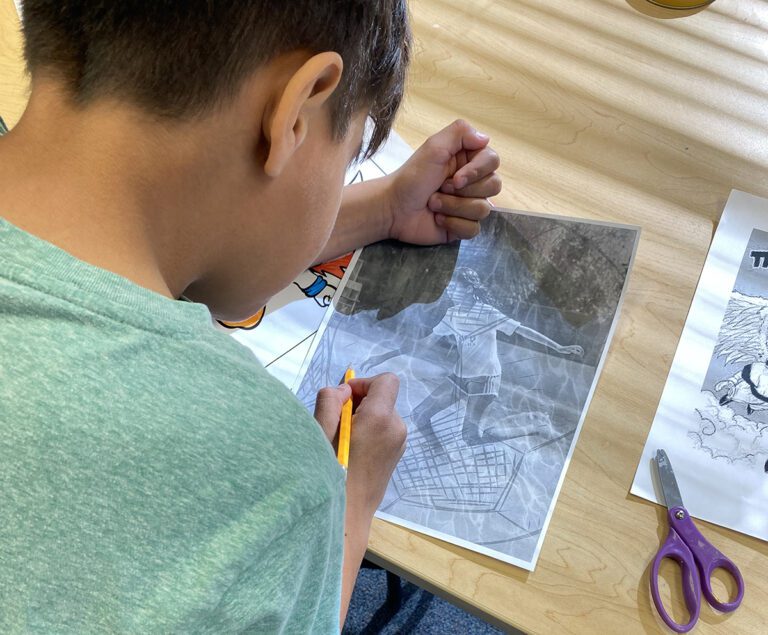It’s so easy as art teachers to get excited about the beautiful art forms of different cultures. From the expressive brush paintings of Japan to the intricate Aboriginal paintings of Australia, we may have the best intentions when teaching our students about other cultures, but ultimately end up falling short. Why? Because often, our students’ products are no more than copies of the originals. We may have students create bamboo sumi-e paintings or paint Australian animals in an Aboriginal style, but is that what teaching culture is really about?

To teach culture authentically in the art room, I believe you have to start with the “Why?”
Why do Japanese students learn to paint bamboo first? Why is bamboo a common motif in sumi-e painting? Why do so many Australian Aboriginal paintings feature animals? Why do the designs include so many dots? When we can get students thinking about these bigger themes, it takes our lessons to the next level. Students not only walk away with beautiful art projects, they walk away with a deeper understanding of another culture and a deeper understanding of themselves.
An example of this idea can be seen with a project I do with my third graders about Australian Aboriginal art.
Instead of having students arbitrarily choose an animal and then paint that animal with dots, we start at the beginning. We look at many different examples of Aboriginal art. We watch Aboriginal artists at work through YouTube. We read Aboriginal tales from the Dreamtime. We discuss the meaning behind the dots.
Then, and only then, I ask each student to tell an important story from his or her life. Like the Aboriginal artists, students come up with their own symbols to tell their stories, and, like the aboriginal artists, students use dots to hide, or make secret, parts of their stories. When the project is over, the students understand Australian Aboriginal art on a deep, meaningful level. They understand why Aboriginal artists work the way they do.

So I’d love to know, how do you present cultural projects in the art room?
Do you think it’s important to delve deep, or is it sometimes OK to just scratch the surface in the name of a beautiful product?
Magazine articles and podcasts are opinions of professional education contributors and do not necessarily represent the position of the Art of Education University (AOEU) or its academic offerings. Contributors use terms in the way they are most often talked about in the scope of their educational experiences.




